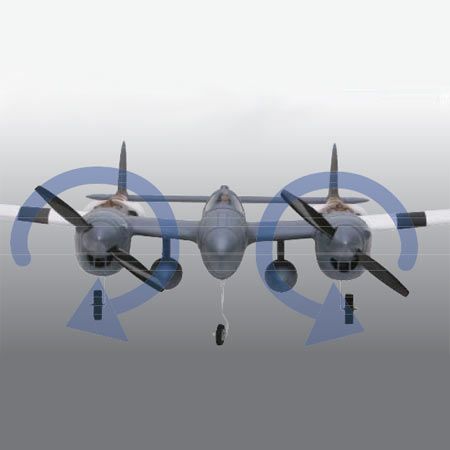Best of flying to You. Here is another possible source for 10x4.5 props
http://www.rctoys.com/rc-toys-and-pa...ROPELLERS.html

Counter-rotating props are almost always arranged so that the propeller blades move inboard at the top of their arc, and outboard at the bottom. So as you stand in front of the airplane the left engine rotates clockwise and the right rotates counter-clockwise. When the airplane is at a steep angle of attack the descending blade takes a slightly larger "bite" of air than the rising blade, producing slightly greater thrust on that side of the prop arc. Having the props both swing inboard at the tops of their arcs puts the descending blade closest to the airplane centerline. The advantage there is that when one engine fails on takeoff or climb (when the airplane is at a high angle of attack), the center of thrust of the remaining engine is slightly closer to the centerline of the airplane than it would have otherwise been. The effect is not huge, but at critical phases it can make the difference between staying in control and less pleasant alternatives.
The most notable exception to the inwards-at-the-top guideline for counter-rotating props is the P-38 which had the props rotating outward-at-the-top. Kelly Johnson and the rest of what became the Skunk Works gang originally developed the P-38 with conventional in-at-the-top counter-rotating props to make single-engine handling as benign as practical. The resulting propwash caused adverse buffeting of the tail, so they reversed both engines to unconventional out-at-the-top rotation, which fixed the buffeting at the expense of engine-out handling. That involved tradeoffs that made pilots' lives more dangerous when an engine failed, but they were carefully evaluated tradeoffs.
Hope these excerpts by Don Stackhouse are of interest.
http://www.djaerotech.com/